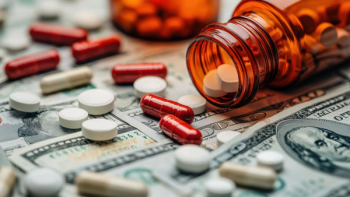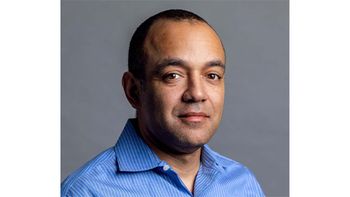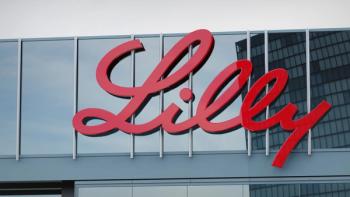
- Pharmaceutical Commerce - July/August 2014
Sovaldi, the $1,000 pill
The eye-popping price tag on the hepatitis C drug, from Gilead Sciences, has prompted unprecedented pushback from payers
In most disease categories, a near-total cure would be heralded as a major victory. But the recent introduction of Sovaldi (sofosbuvir) from Gilead Sciences (Foster City, CA) for the treatment of hepatitis C has been met with more criticism than celebration. Swift, organized pushback from the payer community has arisen in response to the drug’s price tag of $1,000 per pill, which translates to $84,000 for a 12-week regimen of treatment, not including adjunct medications that may be needed and additional costs if longer treatment is required.
Already in its first quarter on the market (ending March 31), Sovaldi racked up $2.27 billion in sales, quickly displacing all earlier blockbuster drugs as the fastest-ever pharmaceutical launch. Datamonitor Healthcare’s (London) infectious disease analyst, Michael Haydock, predicts that Gilead will close out this year with Sovaldi sales of $6.8 billion worldwide.
“Sovaldi’s profile has the potential to transform the treatment of hepatitis C, and the rapid uptake speaks to significant unmet medical need,” said Gilead CEO John Martin in an April 2014 call with analysts and investors. But praise for Sovaldi has been far from unanimous.
“Never before has a drug been priced this high to treat a patient population this large, and the resulting costs will be unsustainable for our country,” says Steven Miller, MD, chief medical officer at Express Scripts. “The burden will fall upon individual patients, state and federal governments, and payers, who will have to balance access and affordability in a way they never had to before.”
Even more galling to payers, many prescribers are using a combination of Sovaldi and Janssen Therapeutics’ Olysio (FDA-approved last November), which jumps the cost of treatment into the neighborhood of $170,000. An analysis performed by Decision Resources (Burlington, MA) in mid-May found that over half of hepatitis C patients among doctors surveyed were getting Sovaldi, and 20% were receiving Olysio, usually in combination with Sovaldi.
In mid-April, the California Technology Assessment Forum, a program of the Institute for Clinical & Economic Review (Boston), issued a report comparing Sovaldi and Olysio. In factoring in the cost of the drugs, the improved cure rate, and the likelihood of a hepatitis C infection eventually leading to liver disease, CTAF concluded that the new regimens (Sovaldi, or Olysio, or both together) would have only 10—20% of their cost offset by improved outcomes at a five-year time horizon (after treatment), and about 75% at a 20-year horizon.
Gilead has its patient-support defense mechanisms in place. “It is important to note that Gilead has established one of the most comprehensive patient assistance programs (PAPs) in the industry to ensure that cost is not a barrier to Sovaldi for patients in the US with high copays or those who lack adequate insurance,” says Michele Rest, Gilead’s public affairs director. The program can limit out-of-pocket costs to as little as $5/month for some low-income patients. Additionally, its Support Path PAP will provide Sovaldi free of charge for eligible patients who are uninsured, underinsured or who need financial assistance to pay for the medicine. The company is providing support to an independent, nonprofit organization that provides patient assistance for uninsured and underinsured patients, she adds.
The value of a cure
Over time, hepatitis C can destroy the patient’s liver (through the formation of scarring and tumors), and this disease is the main reason that nearly 17,000 Americans are currently waiting for a liver transplant. Today, the leading therapies for hepatitis C—Incivek (telaprevir) from Vertex Pharmaceuticals (Cambridge, MA), Victrelis (boceprevir) from Merck & Co. (Whitehouse Station, NJ), Olysio (simeprevir) from Janssen Therapeutics (Titusville, NJ) and now Sovaldi—are all in a class of therapies known as direct-acting antivirals (DAAs). The first three are protease inhibitors. By contrast Sovaldi is a polymerase inhibitor of the hepatitis C virus (HCV). At presstime, Merck had made a $3.8-billion bid to acquire Idenix Pharmaceuticals, another polymerase-inhibitor developer.
Generally speaking, hepatitis C comes in three genotypes—GT1, 2 and 3—and variations are seen in the drugs’ efficacy across genotypes. GT1 is most common in the US, affecting roughly 60% of hepatitis C carriers. Sovaldi’s “cure rate” (meaning, HCV cannot be detected three months after treatment) is as high as 90%, and Gilead is testing a fixed-dose combination with another drug, ledipasvir, that raises that nearly to 100%. Under an FDA fast-track review currently, the combination drug could hit the market before the end of the year.
Cure rates for the other products range up to about 70%, and don’t work well for GT2 and 3. Additionally, the older products are often prescribed with interferon alfa, which has undesirable side effects for some patients.
Worldwide, an estimated 150 million people are infected with hepatitis C, according to the World Health Organization (WHO; Geneva, Switzerland). In the US, the Centers for Disease Control and Prevention (CDC; Atlanta) estimates that 3.2 million people have chronic hepatitis C infections, and most have not yet been diagnosed since the disease often has no symptoms until it progresses, leading to cirrhosis of the liver and liver cancer.
By contrast, roughly 34 million people worldwide, and 1.1 million Americans, are infected with HIV, the virus that causes AIDS.
According to the 2013 Express Scripts Drug Trend Report, the high incidence rate of hepatitis C, combined with the introduction of costly treatments (Sovaldi plus others that are currently in the drug pipeline) is expected to drive its spending on hepatitis C treatments up by 1,800% between 2014 and 2018, raising the spend on all specialty drugs by 63%. “No major therapy class has experienced this high a rate of increase in the 21 years that Express Scripts has recorded drug trend data,” says Miller.
“We believe the price of Sovaldi reflects the value of the medicine,” says Rest of Gilead. “Sovaldi-containing regimens represent a cure, and they reduce the total costs for HCV, taking into account the cost of medications (including those for side effects or complications), healthcare visits and the costs of managing patients with subsequent advanced liver disease.”
Strength in numbers
Today, Express Scripts—which represents 90 million US patients and their private and government payers—is working with a variety of other PBMs and insurers to evaluate options to increase access and affordability of Sovaldi, “up to and including moving Sovaldi market share to other competitors once they become available,” notes Miller.
Specifically, the industry is eagerly awaiting the arrival of new oral hepatitis C therapies in the DAA category that are being developed by AbbVie, Merck and Bristol-Myers Squibb.
“Clinical trial data on the Merck, AbbVie and Bristol-Myers products all look very encouraging, with cure rates in the 90+% mark, so FDA is also giving them fast-track designations,” says Miller of Express Scripts. “We are expecting that we will have a real horse race soon, and this will give physicians the necessary tools to find more cost-effective options with no clinical tradeoffs by 2015.”
Projected revenues in hepC treatments. Source: Datamonitor
Rationing care
Datamonitor Healthcare’s Haydock notes that “warehoused” patients—those known to be infected, but who have been told to hold off treatment until Sovaldi was approved—“are an important driver in the current market.” His projections, based on epidemiological data and surveys of health specialists, are that Sovaldi sales (including the Sovaldi/ledipasvir combination) will peak in 2016, at around $12 billion, and then fall off thereafter, but still representing the biggest share of the market. (Figure)
The CTAF analysis extended to recommendations on how payers should address the current treatment environment. Its key conclusion:
Panel members and outside experts nearly all agreed that for both clinical and cost reasons, not every patient with hepatitis C needs to be immediately treated with the new drugs. Informed, shared decisionmaking about the timing of treatment should be encouraged. Given the circumstances, it is reasonable to consider prioritizing treatment with the new drugs for patients who need urgent treatment and have some evidence of liver fibrosis but do not have advanced liver disease.
Which is exactly what Express Scripts is doing at the moment. “Short term, there are not many options—Sovaldi is a better drug and we appreciate that for our patients,” says Miller. “We are currently filling Sovaldi prescriptions for critical patients who are in Stage III and Stage IV [liver disease], but others can wait. Over the long term, when better, cheaper drugs arrive in the next 9—12 months, we will assist patients to explore all of their options.”
“I do not believe it’s justified medically to prioritize and restrict the cure of hepatitis C. [But] it may be necessary economically,” conceded Norbert Bischofberger, Gilead’s head of research, during an April call with analysts and investors.
However, widespread rationing or efforts to delay access to a therapy that has the potential to eradicate this contagious disease may yield another unintended consequence—namely, the ongoing risk of transmission to others, since hepatitis C is transmitted both sexually and through contact with the blood of an infected person. An estimated 3 to 4 million people are newly infected each year, according to the WHO.
Whether the current level of rationing will be sustained is unclear: in May, Medicare gave in to patient complaints and allowed the combination Sovaldi/Olysio therapy for those with identified liver disease, even though the combination is not FDA-approved.
Mixed messages for patients
Since so many hepatitis C patients are both asymptomatic and undiagnosed, Gilead has launched a direct-to-consumer (DTC) advertising campaign, to raise awareness of both the disease and Sovaldi. The print ads urge patients to get tested for the disease and to seek treatment, saying, “Don’t wait for your liver disease to progress. Talk to your physician today and visit www.sovaldi.com.” The hope is that the availability of a newer therapy that provides a cure with fewer side effects than traditional, interferon-based therapies will spur more patients to seek treatment earlier, before significant liver scarring has occurred, saving costs in the long-run.
However, in light of the organized resistance from—and potential blockade by—a growing number of payers, Gilead’s efforts to move patients to seek diagnosis and immediate treatment are likely to put many patients at loggerheads with their physicians and payers. As many payers are advocating a more-conservative rationing approach for Sovaldi in the short term (limiting its use to just the sickest patients), many patients will likely be forced to wait for competitor therapies to hit the market in 2015. “We expect that the arrival of new therapies in hepatitis C will provide clinical and pricing options that will hopefully help to drive down the price of Sovaldi and others,” says Miller of Express Scripts.
Pricing variation across the globe
Given the size of the hepatitis C market outside the US, Gilead is working to develop programs that ensure deep discounts for Sovaldi in India, Pakistan, Egypt and China, and other countries where a significant number of hepatitis C patients live. And the company is also in talks with several Indian generic drugmakers to manufacture Sovaldi at lower costs so that it can be sold at a fraction of the US cost in numerous developing nations (something it also does with some of the drugs in its HIV portfolio). Similarly, Egypt has already negotiated a deal to get Sovaldi for $300 for a four week supply, compared to the $28,000 that it would cost in the US.
Thus, the Sovaldi launch brings to the fore many of the most controversial aspects of modern pharmaceutical development: elevated pricing in the US relative to world markets; the growth of specialty pharmaceuticals in the current mix of commercialized drugs; the ethics of rationing a treatment to sicker patients; and above it all, the back-breaking cost of healthcare in the US. In retrospect, the sticker shock to Sovaldi should have been anticipated, given that Gilead obtained the drug by acquiring its developer, Pharmasset, in 2011 for $11 billion (at the time, what became Sovaldi was Pharmasset’s only viable project). Gilead’s purchase price represented an 89% premium over the company’s stock price at the time—and nearly seven times the price that the company’s stock had been during the prior year. Quite a gamble.
Some of the harsh reaction also seems to be payers’ increasingly uncomfortable position to specialty drugs overall: “This represents a tipping point for the industry,” says Express Scripts’ Miller. “It makes the point crystal clear that we do not have a sustainable model for how these companies are pricing their drugs.” In fact, Olysio, the product that was introduced with less criticism late last year, is priced at $66,360 for 12 weeks, and will just miss the $1-billion sales mark in 2014, according to DataMonitor.
The Sovaldi debate “is the tip of the iceberg,” Steven Pearson, president of the nonprofit Institute for Clinical and Economic Review, told Kaiser Health News in a mid-May interview. “We have about a year or two as a country to sort this out” as more and more costly specialty drugs are marketed, shaping the future of the pharma industry.
Articles in this issue
over 11 years ago
Pharma in China--calculated risk gone wrongover 11 years ago
The 2014 Sharing Conference: PDMA, Sunshine Act, OIG and Beyondover 11 years ago
US pharma layoffs do not reflect the industry's healthover 11 years ago
Happy fifth birthday for Rx-360over 11 years ago
Sonoco targets temperature-controlled pallet shippingover 11 years ago
Is a new distribution channel--'specialty lite'--emerging?over 11 years ago
Telerx to acquire C3iover 11 years ago
Veeva adds new e-detailing capabilities to its CRM platformNewsletter
Stay ahead in the life sciences industry with Pharmaceutical Commerce, the latest news, trends, and strategies in drug distribution, commercialization, and market access.





